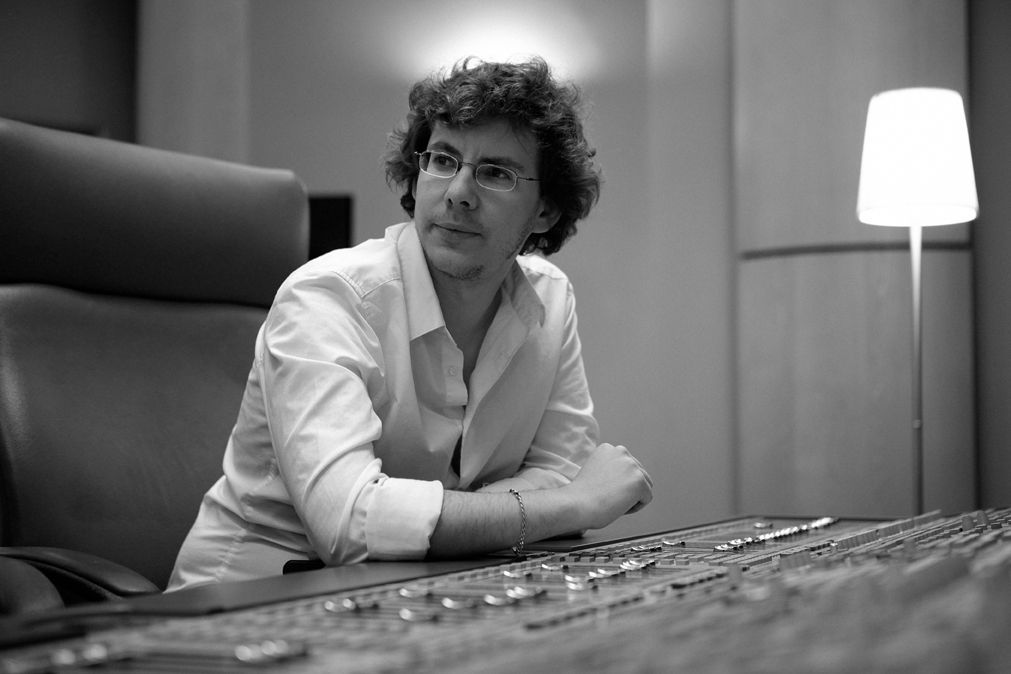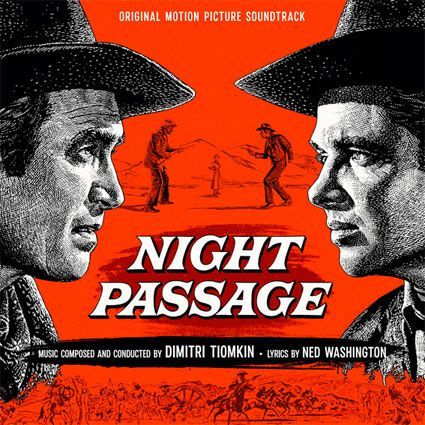An Interview with René Cloërec
On December 13, 1995, René Cloërec entered forever into the annals of cinema. A pioneer of film music, it didn't take long for his talent to be associated with the major productions and auteur films that have now become "classics" of the golden age of French cinema. Solicited by the leading directors of the time, he composed for René Clément (LE PERE TRANQUILLE), Jean Delannoy (DIEU A BESOIN DES HOMMES), Jean Dréville (LES CASSE-PIEDS, LA CAGE AUX ROSSIGNOLS) and, of course, for Claude Autant-Lara (LE DIABLE AU CORPS, LE ROUGE ET LE NOIR, LA TRAVERSEE DE PARIS, L'AUBERGE ROUGE, LA JUMENT VERTE). A prolific musician, he also worked for variety shows (with Edith Piaf), advertising and "Sons et Lumières". In order to pay tribute to him, we are publishing extracts from an interview conducted a few days before his death and recently published in the French magazine Notes. – Yves Taillandier
Is it true that you used to be a piano accompanist for films?
Yes, at the age of fifteen I started accompanying films during the last years of the silent era. At first, it was all about interpretation. Then, when I was alone, I let myself go to the pleasures of improvisation. But this was always guided by what was on the screen. A gesture, an attitude, a look and I adapted my music accordingly. In fact, I had to react spontaneously to the image. This work had a great influence on the way I approached film music a few years later. It taught me to be sensitive to what an image expresses, to look at a film properly, to know how to translate emotions, visible or invisible.
Advertising is also an important part of your musical activity...
Absolutely... Here too, it was a training exercise: you had to find simple, unchanging themes that were easy to remember. The product had to be associated with a striking melody that would strike the mind. I had to express something direct in a minimum of time. By subjecting myself to the constraint of duration, of timing, I assimilated a writing technique that was to serve me well for feature films. In the space of several years, I thus made more than a hundred advertising films and commercials, including that of Jean Mineur (which has lasted for more than fifty years!) and his competitor at the time, Cinéma et Publicité. It was funny because, unaware that I was the composer of both themes, the respective managers of the two rival agencies told me: "Tell me, the infantile theme is not that brilliant! Ours is much better!" - I smiled and agreed!
In 1945, SYLVIE ET LE FANTÔME, your second film with Autant-Lara, was a milestone in French film music: for the first time, a score was built around the sound of a solo instrument. How did this idea come about?
SYLVIE ET LE FANTÔME belongs to the French tradition of poetic fantasy. It is a modest and sensitive film about the passage to adulthood, the refusal to grow old, the fascination for dreams. From the start, we had to find a theme to characterise the ghost, played by Jacques Tati, a central character in the plot but completely mute. Autant-Lara had told me: "Be careful, it's not a ghost that scares you, but a ghost in love!" So I wrote a light, sentimental theme that I submitted to him right on the set, during the shooting. As there was no piano nearby, I whistled the theme to him. He immediately reacted with enthusiasm: "Great! But how are you going to orchestrate this?" Spontaneously, I answered: "I'd quite like to use a flute" and then, two seconds later, "Or even a pan flute, that would be more exotic!" The idea really came to me in a flash! At the time, giving a solo instrument the main role in a film score was something quite unusual! In any case, this unusual and distinctive timbre brought an extra touch of magic to the film. Like the ghost, the pan flute seemed to come from somewhere else, from far away; it reinforced its strange, shifted and unreal side, it isolated it from the living world. In a way, it became the inner voice of this otherworldly character unable to express himself. But my work on SYLVIE was not limited to that: the film has at least six or seven different themes. However, it was the pan flute above all that impressed the audience. Even today, when people talk to me about their memories of the film, they immediately sing or whistle the ghost theme to me. Fifty years later, I find that extremely touching!
During the twenty years of your work together, do you feel that you have developed a universe and explored it further from film to film?
Definitely! First of all, Autant-Lara used to plan his various projects well in advance. As a result, I was involved very early on in the artistic development of his films and that stimulated my musical creativity. Then, from film to film, I had the impression that I was deepening my creation, by tackling extremely varied styles and languages. I went from the waltz in DIABLE AU CORPS to the lament in L'AUBERGE ROUGE (performed by Yves Montand), not forgetting the piano concerto in LE MEURTRIER or the bourrée in LA JUMENT VERTE. In the film industry, successful collaborations are based on encounters of creators who continue to work together over a long period of time, trying to accomplish a body of work. I got to know Autant-Lara and his musical taste in terms of films. In return, he knew what he could ask of me. After eighteen films, we parted ways. I haven't seen him for thirty years.
In addition to Autant-Lara, you developed fruitful partnerships with other directors of the forties and fifties...
That' s true... I was fortunate to work with René Clément, Jean Delannoy, Henri Decoin or Jean Dréville, for whom I scored six films. I also met Henri Decoin on L’AFFAIRE DES POISONS, starring Danielle Darrieux and Paul Meurisse, which is a historical drama inspired by the famous scandal that rocked the court of Louis XIV. For the opening credits, I had written a theme that was majestic and very commanding. Decoin liked it but preferred a secondary theme, a little suspense, built on a repetitive melodic cell, intended for a black mass sequence. "This suspense is both unique and in the style of the film," Decoin told me. "What if we made it the opening credits?" The idea was amazing! I had to seize the opportunity: in a few minutes, I fleshed out this suspense by developing it, by opening it up to a disturbing chord. And Decoin was right! Because from the very beginning of the credits, this haunting theme sets up a mysterious and throbbing atmosphere. Moreover, shortly afterwards, I met Max Ophüls at the Boulogne Billancourt studios. He came to meet me and said: "I have seen L'AFFAIRE DES POISONS. Your music gives the film the suspense it is missing! I look forward to working with you on my next film." Unfortunately, this collaboration never took place; Ophüls died three months later.
Where did you go from 1965 onwards?
After I stopped composing for films, I wasn't unemployed! First of all, I turned to teaching music, running a conservatory for several years. I had the opportunity to work for television with Jean Dréville. In addition, one of my activities was the Sons et Lumières [Sounds and Lights] of the Loire castles: I composed the music for the shows at Azay-le-Rideau and Chenonceau. For the latter château, I took part in two successive Sons et Lumières: Au Temps des Dames de Chenonceau [The Times of the Ladys of Chenonceau], which has lasted for forty years, and Triomphe de Chenonceau [Triumph of Chenonceau], directed by Abel Gance. It was an exciting encounter with a form of entertainment that is different from film but just as demanding. We are walking a tightrope: we have to use our sensitivity to compose period themes without ever falling into an academic exercise in style or an offhand pastiche.
What do you think of all these years spent working in the visual arts?
Without being too self-indulgent, I must admit that I am very happy to have worked for cinema, which is the ideal setting for a composer today. I was introduced to very different worlds, I met amazing personalities, from Gabin to Bourvil, from Autant-Lara to Errol Flynn, for whom I composed the music for THE TAVERN OF NEW ORLEANS, an American production filmed in France, at the Victorine. I still remember Flynn's voice when he said to me in his strong American accent; "Rinaye (René), you should come with me to Hollywood!" But I was too much devoted to my country, to my culture, to expatriate myself... During all those years, I put my capabilities into a passionate, all-consuming field, without ever delegating anything. Not for a moment was there any question of having my music orchestrated and conducted by someone else. I was fully committed, with passion and humbleness. Because of my musical education and the people I've met, I think I have the nature of a symphonist. That said, when I had to write in a style close to jazz, I had no problem with it. Today, I am touched when people tell me that I have a recognisable style, a personal, characteristic writing... I want to believe that my music is linked by a common sensitivity. Because what I wrote really came from the heart.
An Interview with René Cloërec by Stéphane Lerouge
Originally published in Soundtrack Magazine Vol.15, No.57, 1996
Text reproduced by kind permission of the editor, Luc Van de Ven



